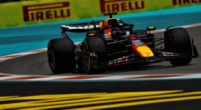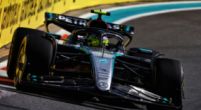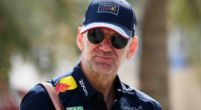Tech

Technical Analysis | Is the new W15 front wing illegal?
Mercedes presented their car for the 2024 season, the W15, which shows a lot of innovative solutions and radical changes compared to the previous version. Mercedes’ main goal, in fact, was to solve rear instability problems they suffered last year and, as Toto Wolff confirmed, “they would hope we are in the chasing pack at the beginning of the season and hopefully a step closer to Red Bull."
To be the leading team behind Red Bull, the Brackley-based team not only completely redesigned the whole aerodynamics of the car, but they significantly changed the chassis, the gearbox (and rear suspension) and the driving position, which has been moved away from the front tyres, just as Lewis Hamilton asked since the beginning of the last season. However, these weren’t the only solutions the new W15 showed during the launch; one of these innovative ideas could be borderline for what is accepted by the FIA regulations. Let’s try to deep dive into these new solutions.
Brilliant new front wing design
Starting with the nose and front wing: here lies the most brilliant idea seen in 2024 until now: the front wing has three flaps (excluding the mainplane). The upper flap is connected to the nose by a very small carbon profile (the flap in this area has a very small chord). The other two are connected directly to the nose (arrow and green line). This solution, however, would seem to go against the spirit of the regulations because it would recreate something similar to the famous Y250 vortex, typical of the previous generation of cars. This was managed to create a greater depression under the floor and to generate more downforce.
However, with the introduction of the new regulations in 2022, the FIA decided to change the design of the front wing precisely to prevent these vortex flows from originating, to simplify the turbulent wake generated by the cars themselves. However, it is important to underline that the front wing is not irregular from the point of view of the technical regulation, which places limits only on what concerns the design of the flaps. According to article 3.9.1 (points d. and e .), "The rearmost point of every closed section must be visible when viewed from below" and "With the exception of the rearmost closed section, the rearmost point of every closed section must not be visible when viewed from above."
Therefore, this solution is entirely legal from this point of view, but it may not be declared as such once the W15 is subjected to technical checks in Bahrain before testing, for the reason just explained.

Beyond this innovative solution, this photo also allows us to observe another change to the front area on the W15: the nose no longer sits on the mainplane, as seen on the W14, but is now connected to the second flap of the front wing, while the main plane is more extended forward in its central portion. Moreover, the nose in the lower part has not been hollowed out as done by other teams, such as Alpine and Aston Martin, but it is very bulky, and its thickness increases the closer it gets to the attachment point with the chassis (purple arrow). This design is certainly linked to the new design of the front wing itself, as these are two components that work closely together.
Shorter gearbox and pull-rod rear suspension
Shifting attention to the rest of the car, many changes to the body and rear suspension can be noticed, as we already spotted on the Aston Martin during the AMR24 shakedown.
The cooling inlet has a very different shape compared to what was seen on Aston and Ferrari, but it is in line with the choice made by Alpine. The cooling inlet is almost triangular, with the lower lip moved far forward and has a rather pronounced curvature towards the inside, then hooking into the lower part of the chassis (arrow and pink line). This design allows for an increase in the flow of air intended for cooling. However, the lower SIS has been housed inside the floor (arrow and green dotted line) to increase the free space under the cooling inlet and create a "double floor", i.e. a second channel intended to feed the diffuser and the beam wing.
For this reason, the lower part of the side pod has also been further excavated to free up more volume (orange line and arrow). This operation was made possible by the incredible work of re-organising the internal elements and also by the packaging of the radiators, which were arranged differently under the cover for aerodynamic purposes (even the Aston Martin sidepods are the proof of this work). Furthermore, the upper part of this "wall" has also been redesigned and has a different, more arched profile (purple arrow and line) to ensure the air flowing inside the water is as undisturbed as possinle.
The upper part of the engine cover has also been revised, as the two very bulky gulleys seen on the W14 are no longer present. They now have a much simpler and more linear shape, in line with the solution adopted by Aston Martin and McLaren (arrow and blue line). This design produces a sort of "tray" that can help push the air from the halo area to the rear, but also the hot gasses from the engine directly onto the beam wing, increasing the load generated at the car's rear.
The rear wing has also been improved. It features a cut in the endplate transition to reduce drag as much as possible (yellow line).

Last but not least, the suspension has also been redesigned, as it now features a pull-rod scheme with the tie rod positioned almost horizontally, both for aerodynamic and mechanical reasons. This new solution can free up more space for the direct flow towards the diffuser. It can improve the interaction between the mechanics and aerodynamics of the car, with better management of the rear tyres both in qualifying and over the race distance. Last year, we could see how much the W14 suffered from instability at the rear, and this radical change, combined with the new gearbox (30 mm shorter) and chassis, allowed Mercedes to fill this gap, as technical director James Allison.
In conclusion, Mercedes showed a very brave car, with innovative solutions and changes to follow Red Bull’s philosophy, but without shamelessly copying them. The step forward they’ve donetakenl be evaluated only in Bahrain, but for now the, W15 seems to be able to fight on equal terms with Ferrari, Aston Martin and, and McLaren forond Place in the Constructors’ Championship.



















































